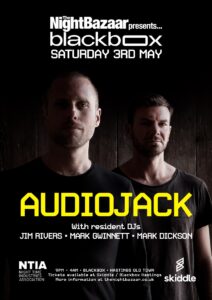A Right Punky Jubilee! Celebrating 50 Years of Music & Fashion Rebellion

Renegade clothing brand BOY London first emerged from the London punk rock scene in 1976 and was forged in the flames of artistic rebellion and punk-inspired anarchy. When BOY London creators Stephane Raynor and John Krivine opened their first boutique at 153 Kings Road in those crazy, hazy days of 1976, punk rock was positively frothing at the mouth and spitting anti-establishment sentiments over all manifestations of twee pop culture.
Today, as BOY London and punk rock both approach their golden jubilee in 2026, how much has the world really changed since 1976, when the creators of both movements truly believed that change was possible? How does the world we live in today compare to the one imagined by a scene based on anti-establishment sentiments and raw and guttural rebellion?
Since its early beginnings in 1976 when it thrived on being more of a happening than a brand, BOY London has always attracted the attention of controversial artists and creatives. Andy Warhol is said to be a fan of the brand and Madonna has also been seen wearing the collection on numerous occasions. Its provocative statement clothing is also worn by such latter-day acolytes as Rhianna, Beyonce, Jessie J, and Cara Delevingne. But what is BOY London? What’s the story behind the brand? What do they stand for, where did they come from, and what can their story teach us about the world we live in today?
When anarchist and punk rock fashion rebel Stephane Raynor created the brand, there was a lot happening in the world! In London, the punk scene was exploding, Apple Computer Company was being formed, the ill-fated Concorde was taking its first commercial flight and legionnaire’s disease was actually a thing.
It was a time when punk and reggae were closely bonded, as cultures mingled, and the enlightened youth of the day struggled to unite under the hopeful umbrella of Rock Against Racism – a rock star initiative to end racism and racist abuse in the UK. This was a scene where angry and disillusioned British youth mixed and allied with Jamaican immigrants against everything that was truly traumatising and limiting, in a Little Britain that stomped all over their youthful sense of optimism and possibility on a daily basis.
Before evolving BOY London, Raynor ran the infamous Acme Attractions, which was more of a creative hub than a shop. It was a meeting place for the coolest and hottest artists on the 1970s music scene. Anyone who was highly visible and notorious on the 1970s punk scene probably knew about the shop and, in particular, its reputation for importing the latest dub and reggae records. This was a place where Raynor, a music lover and avid record collector could hear the latest dub releases as they came in, hang out with the likes of Bob Marley and Chrissie Hynde, and absorb the sounds that were so formative for the youth of the time.
Eventually, Raynor left Acme and opened the BOY London shop on the King’s Road with businessman John Krivine. The brand, proudly displaying its ad-hoc collection of confrontational clothing, shocking memorabilia, and quirky odds and ends quickly became an iconic symbol of all that was young restless, angry, unreasonable, unapologetic, and defiant.
A mixture of creative hub, nightclub, curiosity shop, art gallery and fashion boutique, the shop was, in the eyes of many, bizarre and hard to pin down. It sold weird things and attracted violent responses. Smashed windows, police raids, and arrests for various offenses soon marked the spot out as a bastion of 1970s rebellion. Often unfocused and unclear in its aims and desires. But there was, at least, rebellion.
A rush of phone calls from Madonna, Elton John, Blondie, Sid Vicious, and Andy Warhol, meant that it wasn’t long before BOY London was dressing everyone, everything, and any event that mattered in subversive pop culture. At one point, Boy George became such a figurehead for BOY London that there were many who mistakenly believed the brand to be his!
50 years later, the same punky, anarchic, controversial art statements have kept BOY London on the leading edge of youth subculture and urban fashion. As both BOY and punk approach fifty, like most 1970s babies, perhaps the brand has now matured into its most logical evolution – a slightly petulant urban streetwear label with an untamed heart for rebellion.



